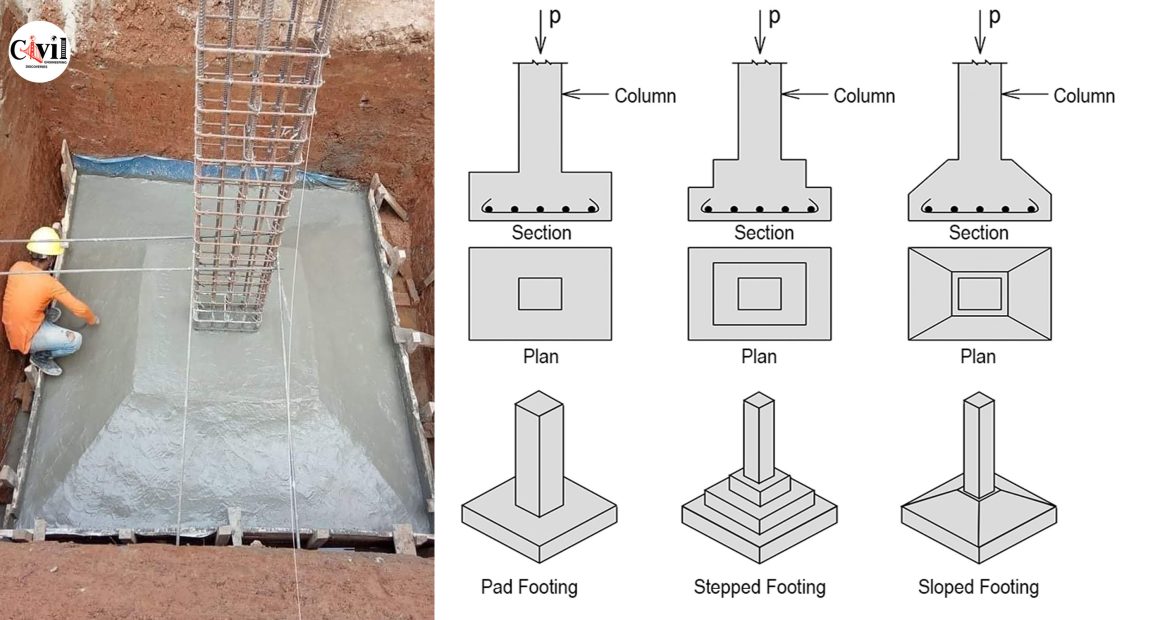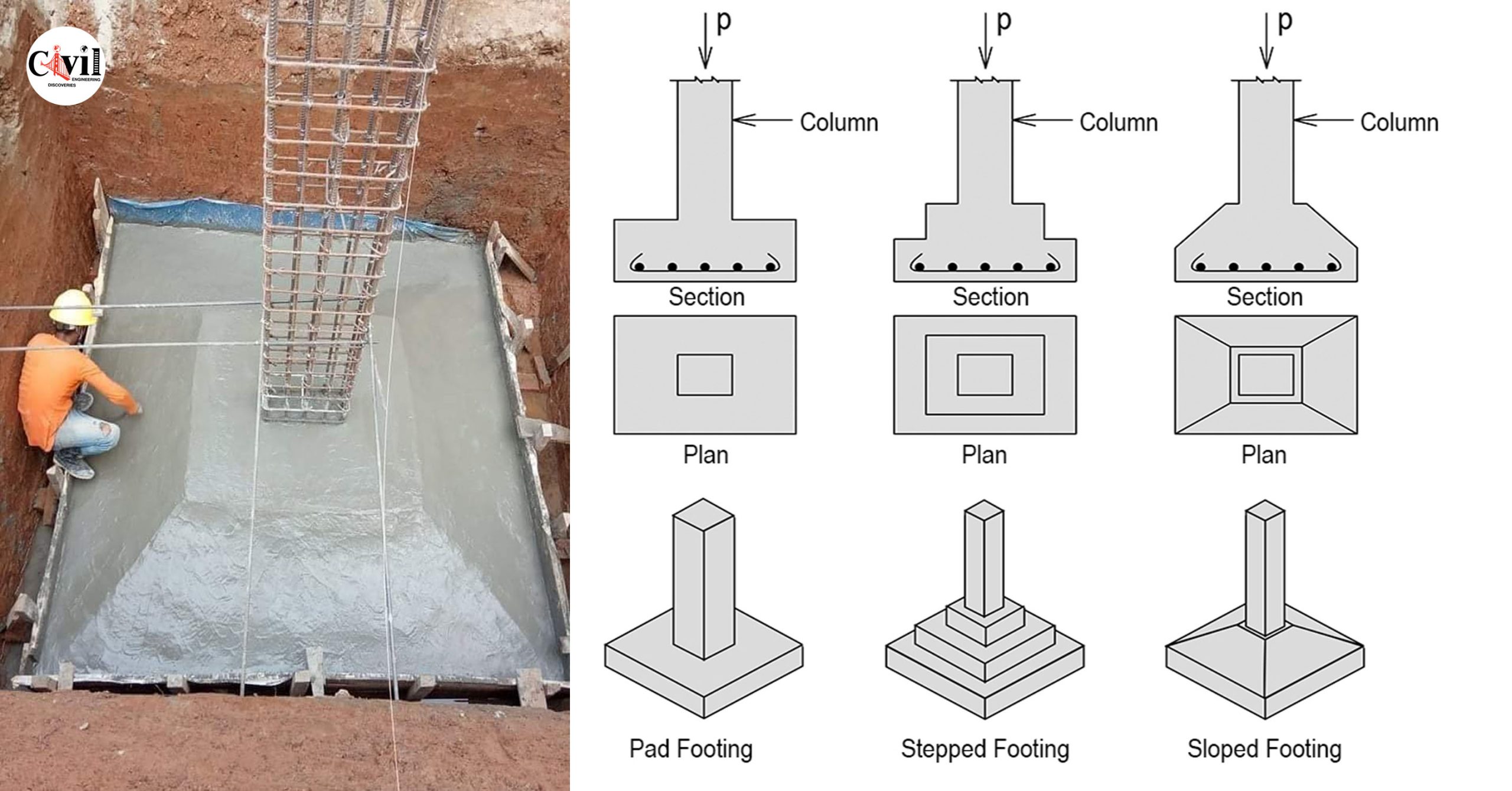What is Isolated footing?
The isolated footing supports individual columns. They might be steeped or have projections in the concrete foundation. Steel reinforcement is given in both directions in a concrete bed for heavily loaded columns.
On all sides of the concrete bed, a 15 cm offset is usually supplied. In the case of brick masonry columns, a 5 cm offset is likewise provided in regular layers on all four sides. When it comes to concrete column footings, they might be slabbed, stepped, or sloped.
Isolated footings come in a variety of shapes and sizes, including spread, stepped, and sloped footings. The most common shapes are square, rectangular, and round. The soil condition and the pattern of exerted loads determine which type of footing is used. When columns are placed at relatively long distances, isolated footings are one of the most cost-effective types of footings.
Isolated or single footings are structural elements that are used to transmit and distribute loads from single columns to the earth without exceeding the soil’s bearing capacity, as well as to prevent excessive settlement and provide enough protection against sliding and overturning. They are also employed when there are light column loads when columns are not tightly spaced, and when the soil is uniform.
Types of Isolated Footings
- Flat, Pad, Plain, or Reinforced Isolated Footing
- Stepped isolated Footing
- Sloped Isolated Footing
Click Here To See 25+ Mind-Blowing Images Of RCC Concrete Structures







































